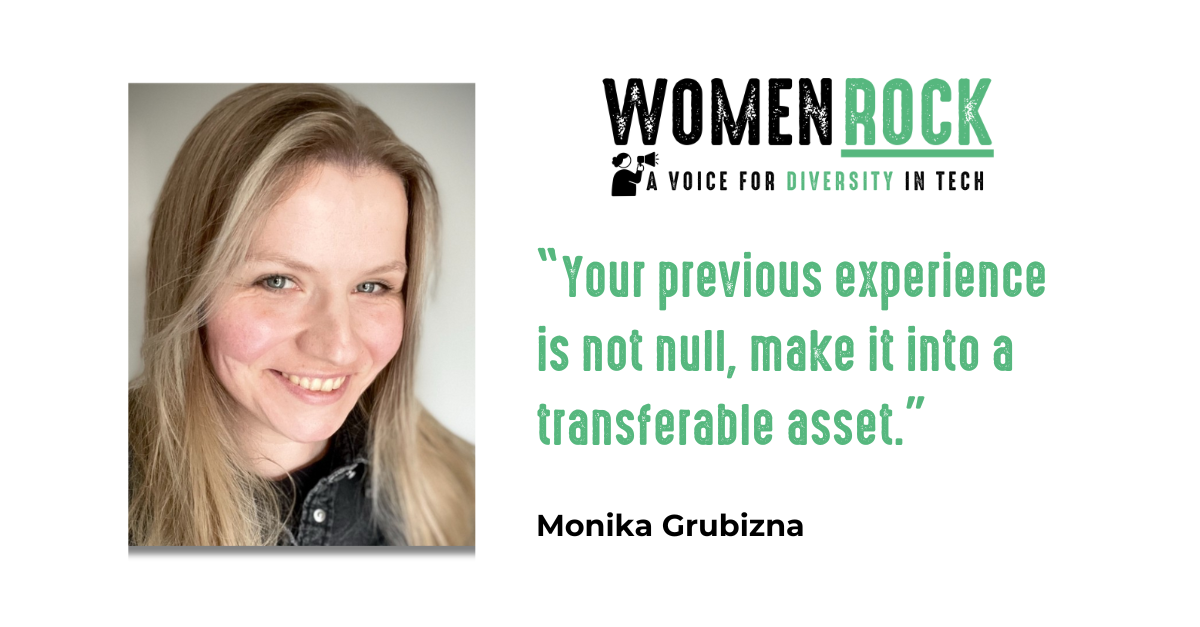
Monika Grubizna on the Unconventional Path in Tech: From Fine Art to AI Leadership and Fighting the ‘After-Hours’ Promotion Culture
“The creative background helps, understanding how people interact with systems matters whether you’re designing interfaces or leading teams.”
In an industry often defined by rigid career ladders, true innovation frequently stems from the most unexpected places.
Our latest inspiring feature introduces a leader who proves that a diverse, winding path is the ultimate career asset. We sit down with Monika Grubizna, a Software Team Lead at Graphcore, who has navigated a truly unconventional path in tech. Having transitioned from the arts, including graphic design, printmaking, and publishing a children’s book, Monika embodies the power of diverse experience. She reveals how the rigour of a creative background fuels effective problem-solving and team leadership in software engineering.
In this exclusive interview, Monika shares her perspective on overcoming self-doubt and discusses her vital mentoring work with organisations like Women Go Tech and Dare IT, specifically guiding others on the unconventional path in tech.
In this blog, we explore the essential lessons learned from embracing difference and the systemic changes required to eliminate proximity bias and support leaders with caring responsibilities.
Hi Monika, thank you for taking the time to speak to us. Your career began in the arts. What sparked your decision to pivot into tech, and how did that transition unfold?
It happened both gradually and abruptly, by a series of connected events. I always enjoyed variety.
I never settled for a “style” or a single career path. At various points, I was teaching, working on a PhD, creating and exhibiting large-scale serigraphs, designing exhibitions, illustrating for press and children’s books, and I even wrote and published my own children’s book at some point.
Over time, the demand for digital and design work grew, leading my focus towards designing user interfaces and UX. That wasn’t enough, I like to be able to do it all, so I wasn’t satisfied by the fact that I couldn’t code what I designed.
At the same time, I’d just moved from the US to Scotland, and it felt like a good moment for a fresh start. I was also at a point where I wanted a break from purely visual output in my work. Having what I then perceived a hard skill – coding – was meant to give me a break from debating colours or the size of logos with clients who always knew better.
I thought that if I taught myself to code, I could also strengthen and diversify my career prospects and be the all-in-one design-to-code unicorn businesses were advertising for at that point. (Spoiler: unicorns don’t exist, but the coding stuck.)
So I started doing some online courses, freelance projects (bad!), and signed up for a coding bootcamp. No, you can’t learn to code in a few weeks, but it gave me some good habits and a solid foundation. After that, I got a job as a UX engineer, which was a fancy title for “doing it all” ideation, design and implementation. This got my foot in the door and led to further software engineering roles.
Do you feel your background in art has influenced your approach to problem-solving or creativity in technology?
Someone in one job interview asked me if I could draw an analogy between software engineering and the printmaking I used to do; layers were my immediate thought.
You plan, then you break down, separate the layers, add details to each one, then put them together, and you have a final product.
I think there are a lot of stereotypes around artists or designers by default struggling with maths and logic, where in reality, you need similar rigour in thinking to be successful, whether you are putting together a strong page layout, finishing a painting, or building a software component.
What art gave me is an appreciation of the process and experimentation. I am fearless in the pursuit of things I believe in. I also don’t fear people’s judgment, which helps with surviving code reviews, particularly the ones where someone’s left seventeen comments about your variable naming.
I would also attribute a lot of my approach to leadership and team building to the community art project, Power to the People!
You’ve supported career changers through mentoring. What common challenges do you see people face when breaking into tech, and how do you help them overcome them?
The number one thing seems to stay the same, regardless of economy and external circumstance: women don’t believe in themselves enough.
All the programmes I have been mentoring have focus on increasing representation of women in tech, so all the mentees I have worked with are women. Imposter syndrome is the biggest barrier, full stop.
Releasing themselves from perfectionism and self-imposed expectations to know it all before applying for a job is the first step. The current situation in the market and the fear-mongering articles about AI replacing engineers are adding to the self-doubt.
Getting your foot in the door is the most difficult first step. We always try to focus on finding something special about a person and their experience that makes them stand out. Usually, it’s right there; they just can’t see it yet.
What advice would you give to someone who is doubting their ability to switch careers into tech later in life?
Don’t do it! (Joking.)
Definitely take your time and consider your internal motivation, find clarity about your WHY. Once you have that and you’re convinced that tech is right for you, just start.
- Do something.
- Build a project.
- Sign up for a meetup.
- Join a local group dedicated to upskilling in the area that interests you.
Do something, see if you find the process enjoyable, then make a plan, break it down, and find your angle. Your previous experience is not null; make it into a transferable asset. Do something in small steps.
There was a time period when career changers felt encouraged to quit their job… Please don’t do this, especially in this time and economy. Use your professional network or find internal opportunities that help you transition closer to the role you’re interested in. Currently, every company has a digital presence, a website, and some internal software. You might get your foot in the door closer to home than you expect.
Moving into leadership can be as daunting as it is rewarding. What’s been the biggest learning curve for you as a tech leader?
Being a tech leader, while not seeing myself as one, see the above about imposter syndrome and all. Yes, the shoemaker’s children go barefoot.
It took me a long time to see and appreciate the full scope of my skills and what I have to offer without downplaying them or comparing them to the ones of “real” engineers (you know, the ones who can recite algorithms in their sleep and have opinions about Vim versus Emacs.)
I work with brilliant people, some of them with decades of experience. I don’t have their skills, and that’s okay, because they don’t have mine – at the end of the day, strong outcomes are driven by differences and diverse opinions.
How do you balance the need to deliver technical excellence with nurturing and supporting your team’s growth?
That’s a tough one. I’m not convinced the mythical technical excellence really exists; in real life, it is more of a mixture of aspirations, deadlines, and compromises between those two.
We try to always incorporate the team’s feedback in planning and execution of the work, have a mix of “teeth brushing” and “sweet treats” in the backlog, and encourage taking personal development time.
Sometimes excellence is just shipping something that works and doesn’t make everyone cry.
Parenting and leadership are both full-time jobs. How have you navigated the demands of both, and what’s helped you find balance?
I haven’t found one. I have so many plates spinning in the air that every week comes down to a decision about which of them will be dropped this time.
What it’s taught me, though, is to become even more of a ruthless prioritiser at work, and my understanding of “urgent” has also changed with the newfound perspective which is oddly liberating.
Turns out, very few things are actually urgent when compared to a toddler’s broken tooth. It’s oddly liberating.
What would you like to see change in the tech industry to make it easier for parents (and especially women) to thrive in leadership roles?
Two things: narrative and representation. I think the idea of networking and building relationships outside of work hours or mandating return to the office is particularly harmful, because it automatically excludes all the people with no support system and caring responsibilities.
The “let’s have drinks at 7 pm to discuss your promotion” culture needs to die.
I would like to see more diverse senior leadership teams, in all aspects: age, gender, background, ethnicity, so that various groups could feel seen, listened to, and understood.
Monika‘s Quick Takes
- Favourite Quote: ” Ask forgiveness, not permission.”
- Book Recommendation for the Women Rock Bookshelf? Professional: Engineering Management for the Rest of Us by Sarah Drasner, for when you realise team lead now means therapist.
Fiction: One Hundred Years of Solitude by Gabriel García Márquez is on my reread list. - Favourite Song: Depends entirely on my mood. Lately, instrumental for deep work, chaos when I need energy.
Monika Grubizna’s interview is a powerful mandate for change. Her journey from printmaking to AI leadership proves that your skills, especially creative ones, are your most powerful asset on the unconventional path in tech. We leave inspired by her honesty about Imposter Syndrome and her relentless focus on fighting systemic barriers like proximity bias. Her message is clear: strong outcomes are driven by differences and diverse opinions. Embrace your unique background and remember her ultimate advice: ask forgiveness, not permission.
Want to be featured and share your story, or know someone with a great story? Get in touch at hello@womenrock.tech.
Interviewed by Imogen Meston






